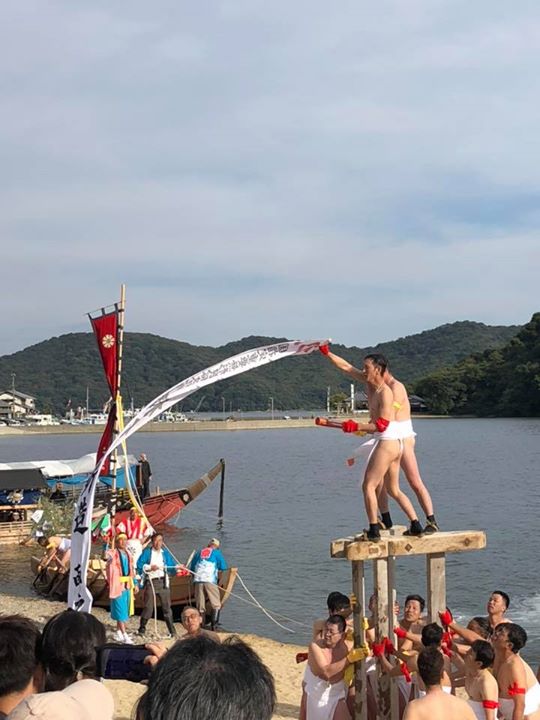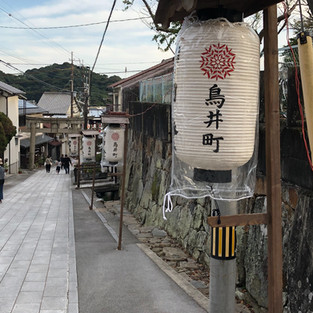Sakoshi Ship Festival
- Richard Freeman
- Oct 19, 2018
- 4 min read
Updated: Jun 21, 2022
One good thing about Japan is that there are always things to see and do. This is why letting yourself get a little lost can sometimes have big payoffs. It happened to me recently as I traveled into Hyogo prefecture with no real plan. After meeting up with an acquaintance of mine, we found ourselves in a place called Sakoshi, a seaside area near Ako. We noticed many traditional Japanese styled boats along the beach and people starting to gather for a local festival. So we investigated.

Lucky meeting
We decided to take a walk and get a few pictures before it became too crowded. As we made our way to the beachfront where the traditional Japanese style boats were prepared and waiting, we met two of the kindest gentlemen. It turned out, they were responsible for building and maintaining the boats used in the festival. I learned a lot considering we were using some broken English and my bad Japanese. Most of the time my acquaintance talked with them and I used the opportunity to listen and translate as best I could. We were treated to a nice lunch at a local, possibly former, sake brewery. There we had a drink and continued our conversation.

The Festival
We learned how this event was one of three of its kind in Japan that use these traditional boats. The three events are more commonly referred to as Japan's three ship festivals. Another like it is held at Miyajima in Hiroshima Prefecture. The festival itself is held every year and usually lasts most of the day. After a ceremony at the Osake Shrine on the hillside across from the beachfront, a long slow procession takes place. A parade of sorts. The shrines deity is transferred into the Mikoshi (portable shrine) and carried in a slow festive parade to the beachfront. Once there, it is set to rest on a special spot with a front row seat for the events that take place next.

When the Mikoshi is set down, the next event is started with the blow of a horn by the priest. I say horn, but it was more of a large conch shell or something like that. I really couldn't get a good view of it from my position, even though I was close enough to almost touch him. Once the horn is blown, two boats rowed by men in nothing but loincloths begin their maneuvers, races, and jesting. The men were all having a good time and seemed to be in very high spirits. After a few rounds and practice races of sorts, they ran their boats ashore and disembarked while singing and chanting.
They would alternate between singing and chanting for each event that followed. There was a special boat anchored parallel to the shore. This boat would be used to transport the Mikoshi to a shrine on a small protected island just across the bay. But before this the men would chant to move the support structure for a ramp that would be used to carry the Mikoshi onto the boat. They would chant to move it onto the beach between the Mikoshi and the boat. Then, they would start singing and they began to play around on it and climb it. After a bit they would return to chanting to move it again, sing and play, chant and move, sing and play, chant and move. Until finally they put it in place.
This process was used and repeated for each of the planks as well. Each plank was first thrown onto the sand in front of the Mikoshi and then all the men would walk or dance across it. They would pick it up and charge from side to side as if using it as a battering ram until the crowds pushed it back. They would lift the planks onto their shoulders and men would climb up to dance or wave banners and such. Some of the climbing were much more impressive than my words can give it justice. In this way, with singing and chanting, a ramp was constructed and secured. After each plank was placed, it was washed clean of the sand as well. Then finally, the Mikoshi was carried onto the ship and the men returned to their boats.

As the boats left the beach, more joined them. Some carried the monks or priests from the shrine as well as others. The boats took a long trip around the bay in a single file line until they reached the sacred island. My understanding is that the island was protected and people were prohibited from going there. Or maybe that people were prohibited from cutting down trees or building there and its just a bad idea to go there because of dangerous wildlife. I am not too sure because of my bad Japanese.

Part two, that we missed
Unfortunately I had to miss one of the best parts of this festival though. I had to catch a train back home because I had work the next day. I really wanted to stay though. in the evening, as the sun sets and it begins to get dark, all the ships are lighted up and they make their return. Combines with the fire piles that lined the beach and walkway to the temple, it is something I hope I can return to and experience for myself.

Conclusion
Its easy to get tired of Japanese festivals (matsuri) when you don't take part or experience the more unique aspects. If you just go for the food, then it can get old real quick, especially if you don't like navigating large crowds. My advise is to let yourself get lost in the moment. Talk to the locals. Become as much apart of the events as you can. Don't just learn about the history either, experience it. These are the best parts about getting lost in Japan.
If you are interested in seeing this particular festival for yourself, then then be sure to check out the link below. The Sakoshi ship festival, or Osake Shrine Funa Togyo, takes place every year on the second Sunday of October. Sakoshi is located next to Ako in Hyogo prefecture and is accessible by train from JR Sakoshi station.




















Comentários